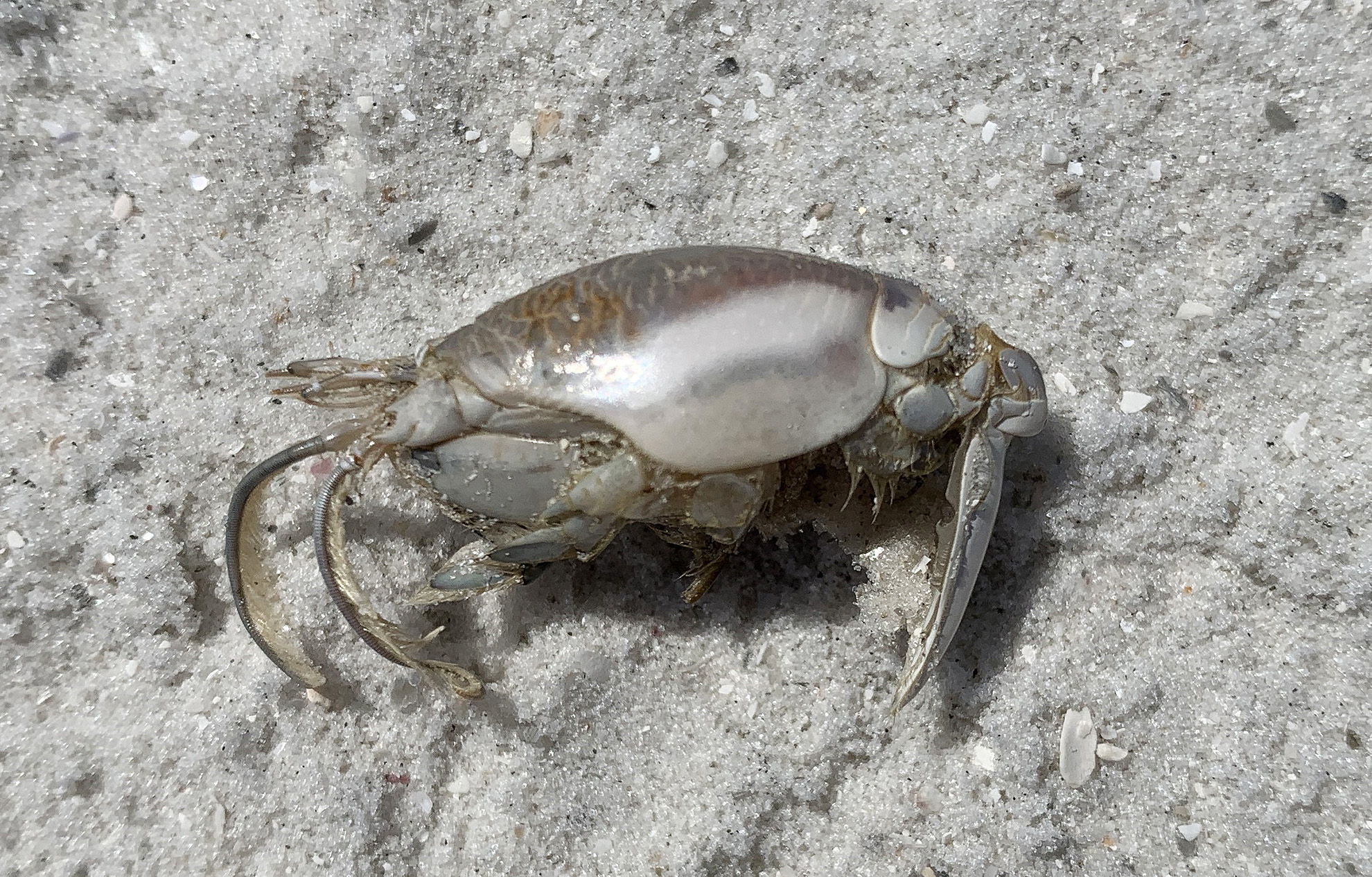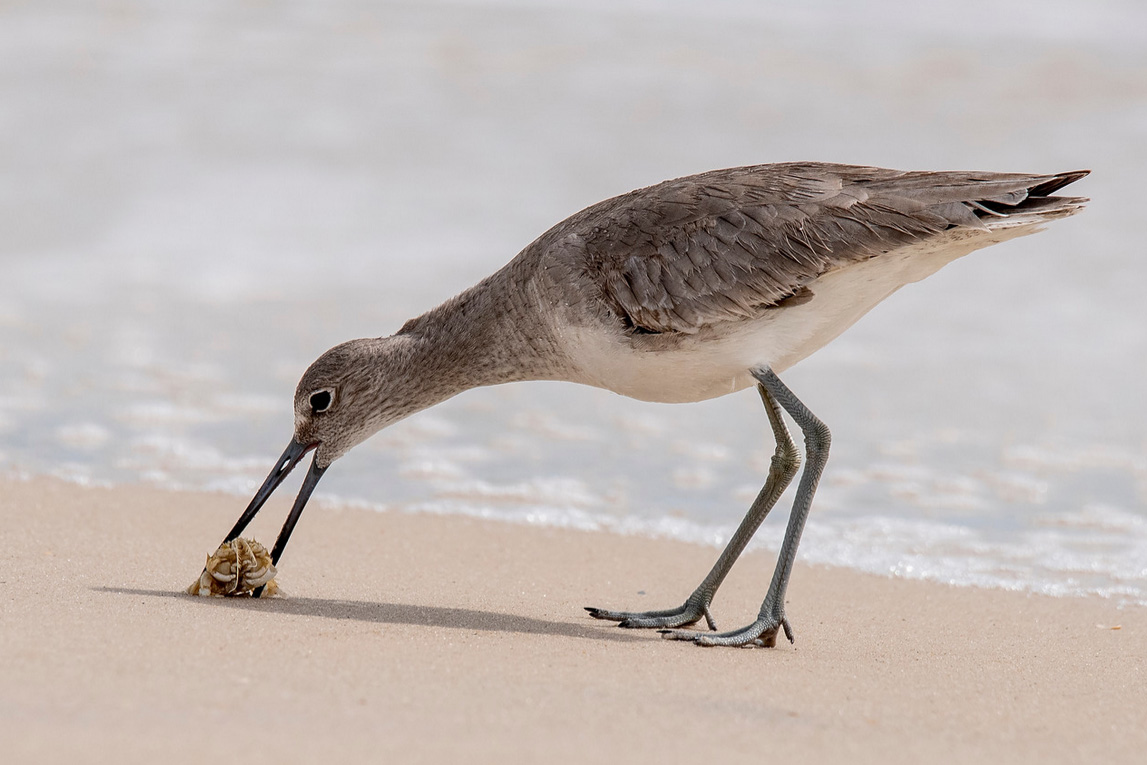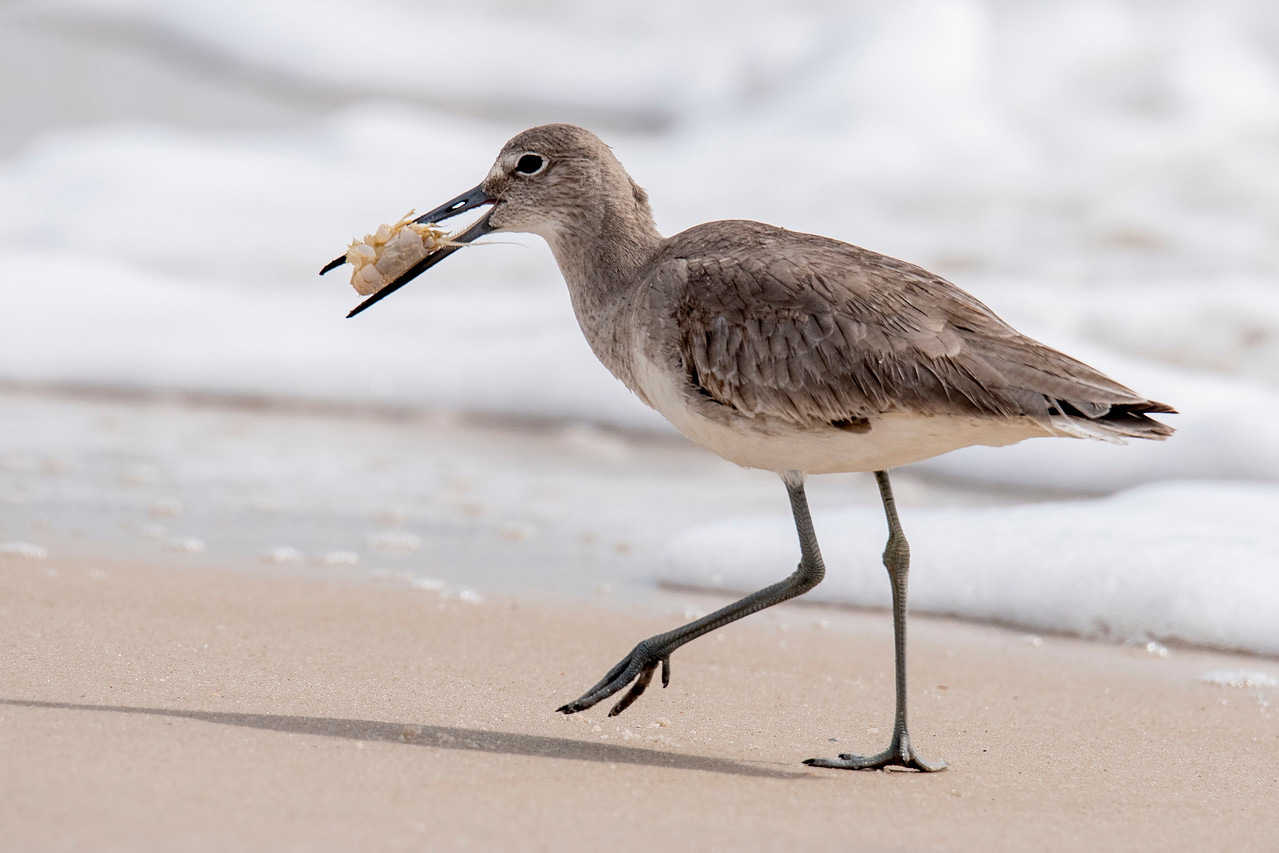Nature Notes
Atlantic Mole Crab
by Terry McNamara
Perhaps Fishers Island’s most violent, turbulent environment is on our southern beaches, where the waves of Block Island Sound continuously break on shore. Although the coastline is generally rock and pebbles, there are several beaches where the substrate is mostly sand. It is in these areas, where sanderlings and semipalmated plovers skitter up and down the beach with the waves, that the Atlantic mole crab (Emerita talpoida) is in residence.
Walking at the water’s edge along the sand, the area at first appears lifeless. Yet even the most casual observer may notice that this intertidal region, where the waves break and recede – an area called “the swash zone” – has an interesting physical characteristic. The agitation caused by a receding wave separates the sand particles, and the normally solid sand behaves like a thick liquid, a phenomenon called thixotropy. The mole crab evolved to flourish in this fluid environment, where the sand becomes a place to hide as well as a place to feed.
Often, if the wave action is gentle, V-shaped ripples will indicate the presence of buried colonies of crabs. They move up and down with the tide to stay in wet sand but sometimes get turned over by strong surf. During the winter months, mole crabs move to offshore sandbars to escape extreme temperatures. Fragile shells from damaged mole crabs are sometimes left behind in the wrack line.
Mole crabs range in size from 0.25 inches to over an inch in length. They are sand-colored, egg-shaped, and tapered on both ends. Like all true crabs, they have ten legs that evolved for swimming and digging. A long, V-shaped tailpiece folds under the body and anchors the crab in the sand. Like most of their relatives, mole crabs are brooders; the orange egg masses visible on the underside of females will be released when they’re ready to hatch.
Unlike other crabs, which move side-to-side, mole crabs dig – and swim – backward. Their unique ability to burrow quickly and repeatedly has led numerous scientists to study their adaptations. The crabs bury themselves facing incoming waves in a sloped intertidal zone, leaving only their eyestalks and two feathery antennae above the sand. These antennae filter out suspended phytoplankton to eat as the waves recede over them. Children digging in the swash zone often briefly expose mole crabs, allowing them to capture the harmless creatures.
This summer, when you’re walking any of our sandy “ocean” beaches, dig in the upper sections of the surf zone and see if you can find these hidden treasures.




